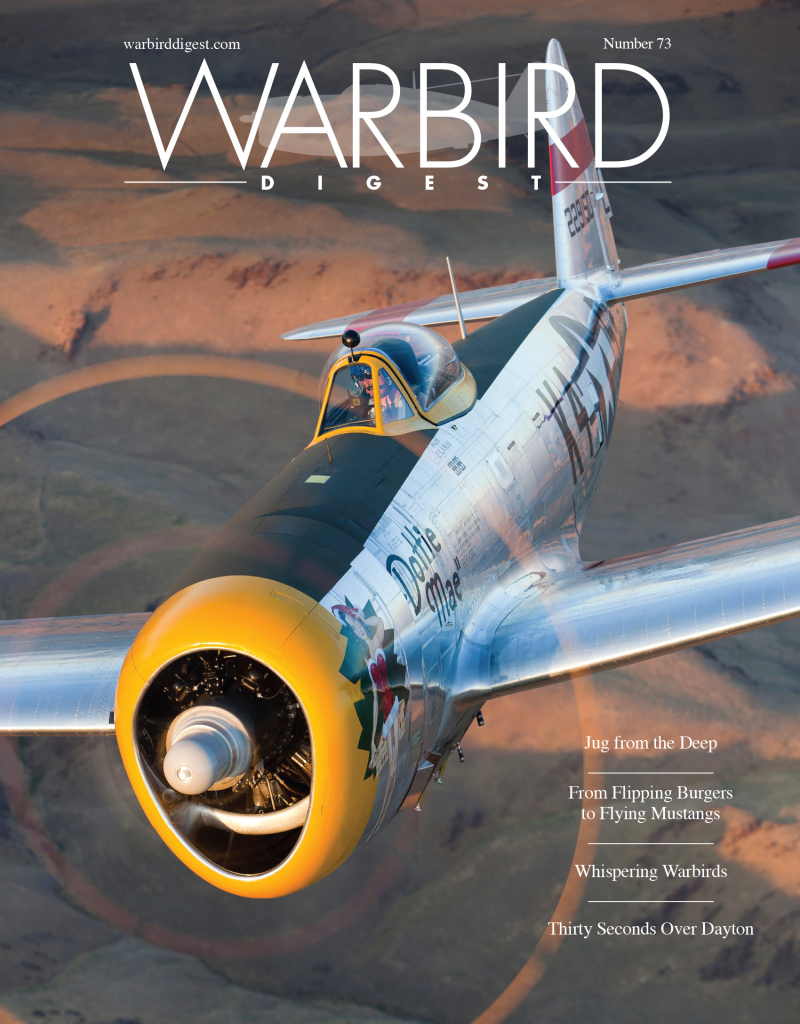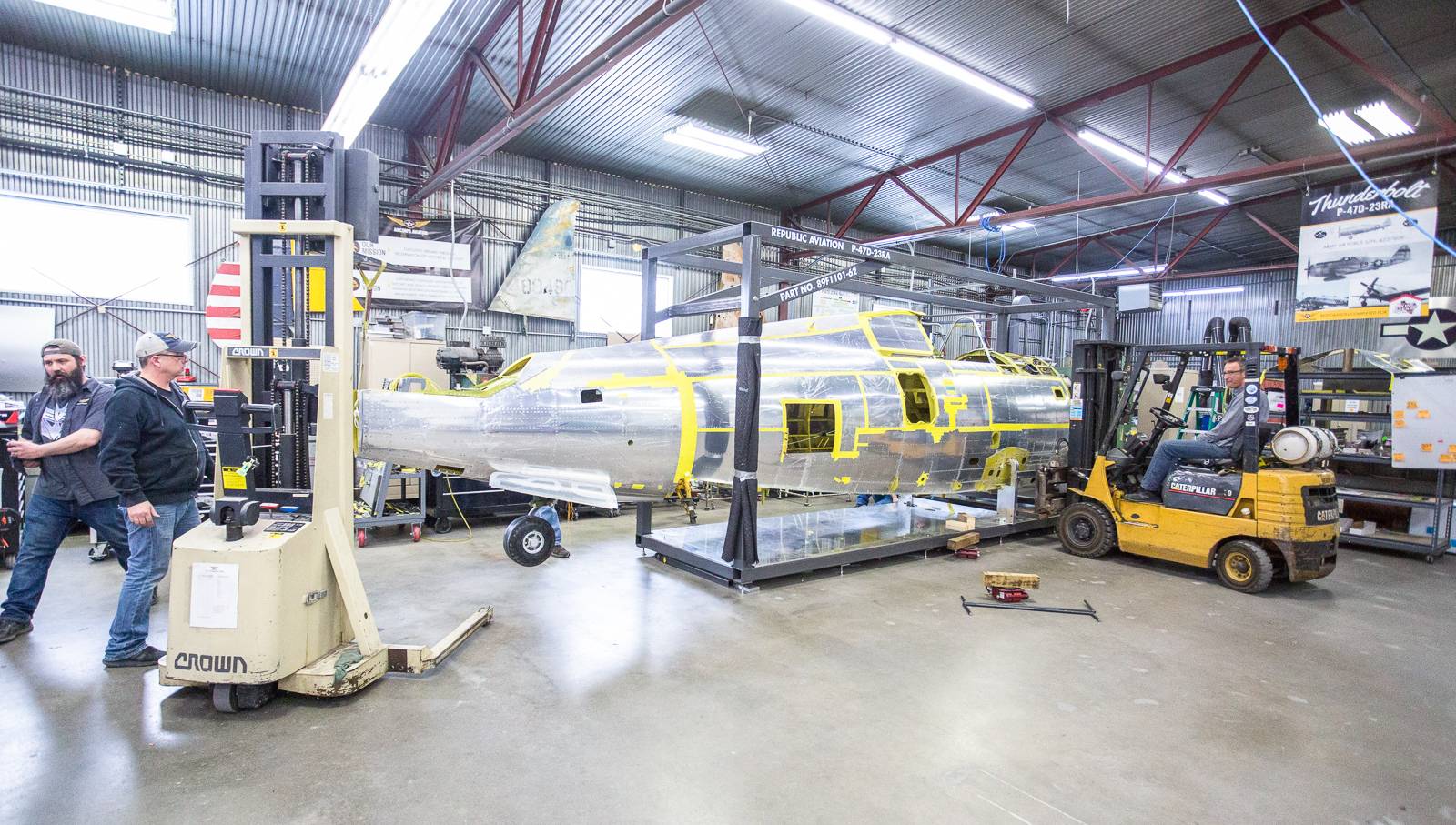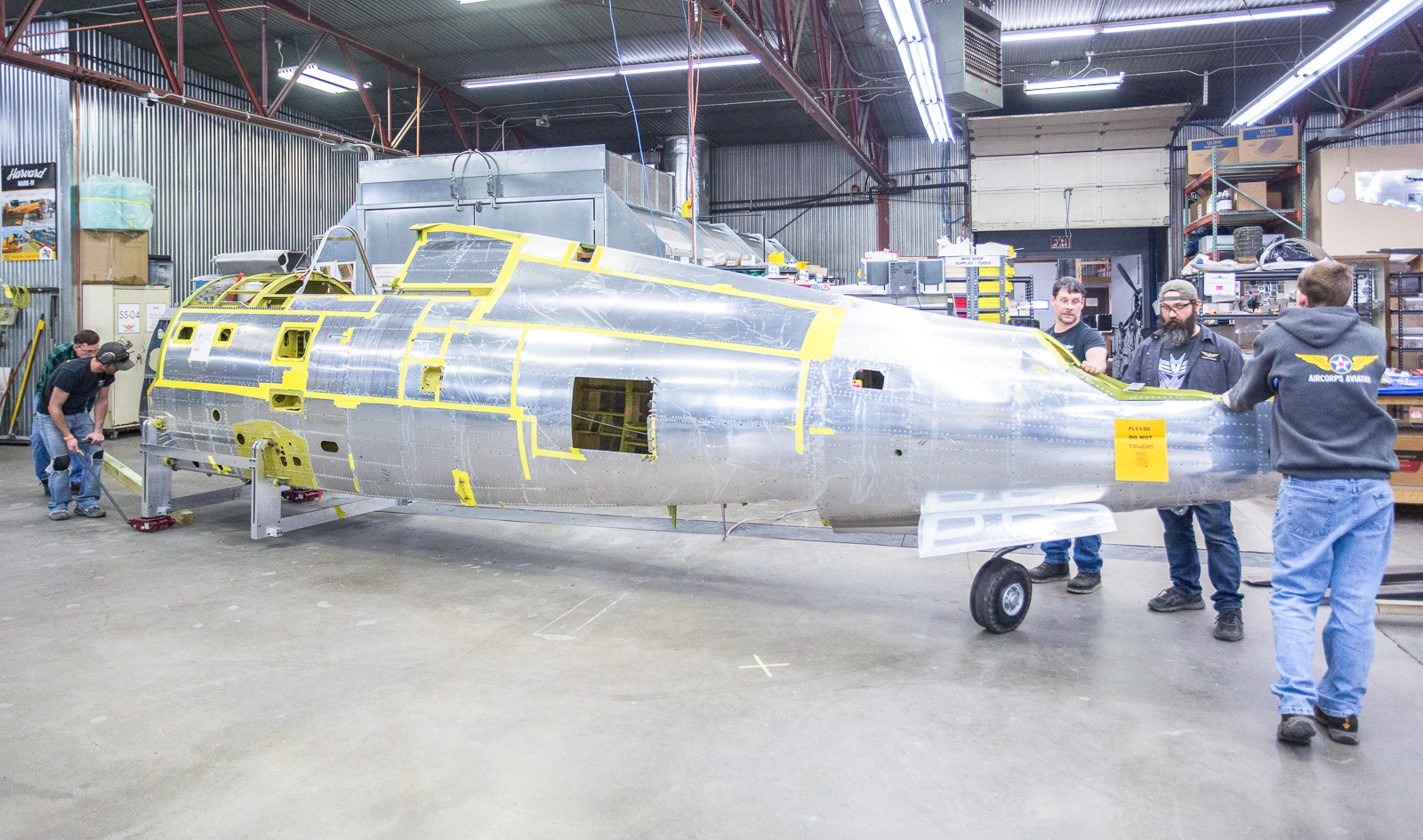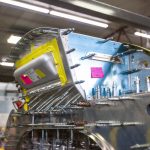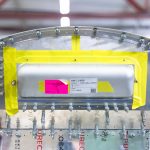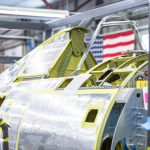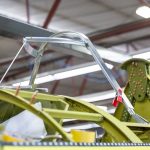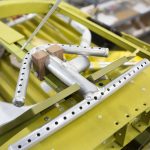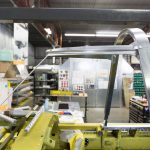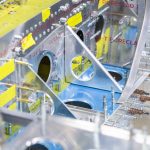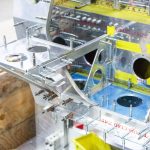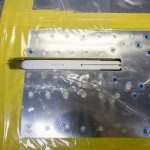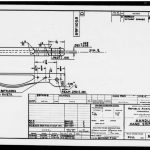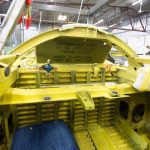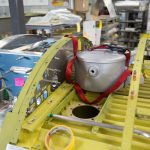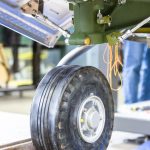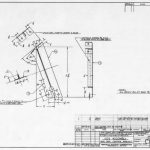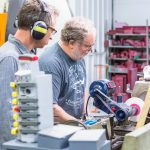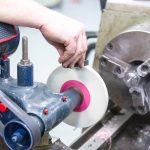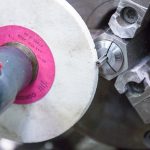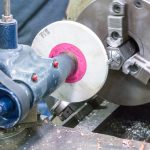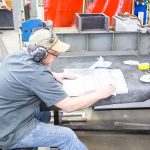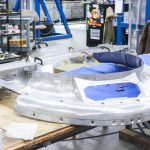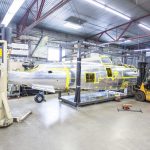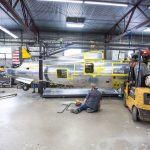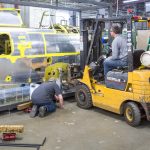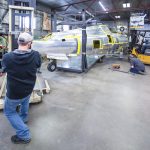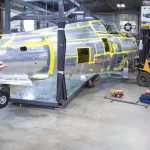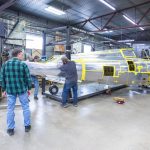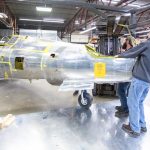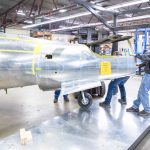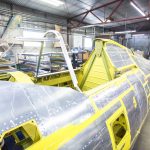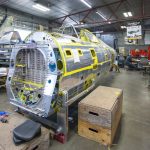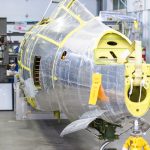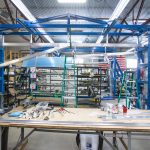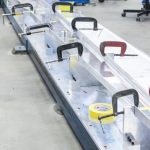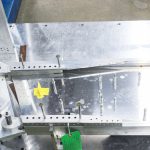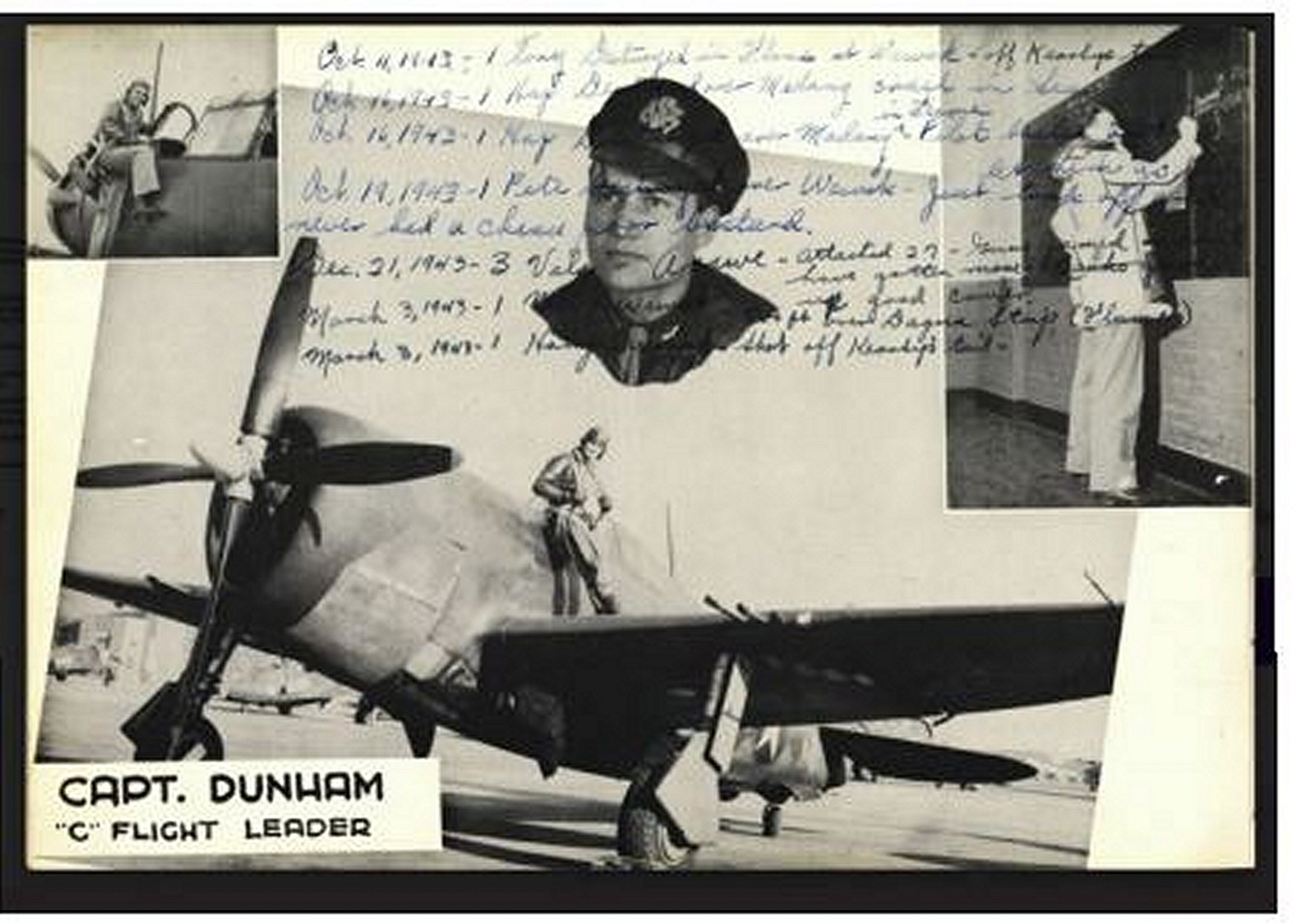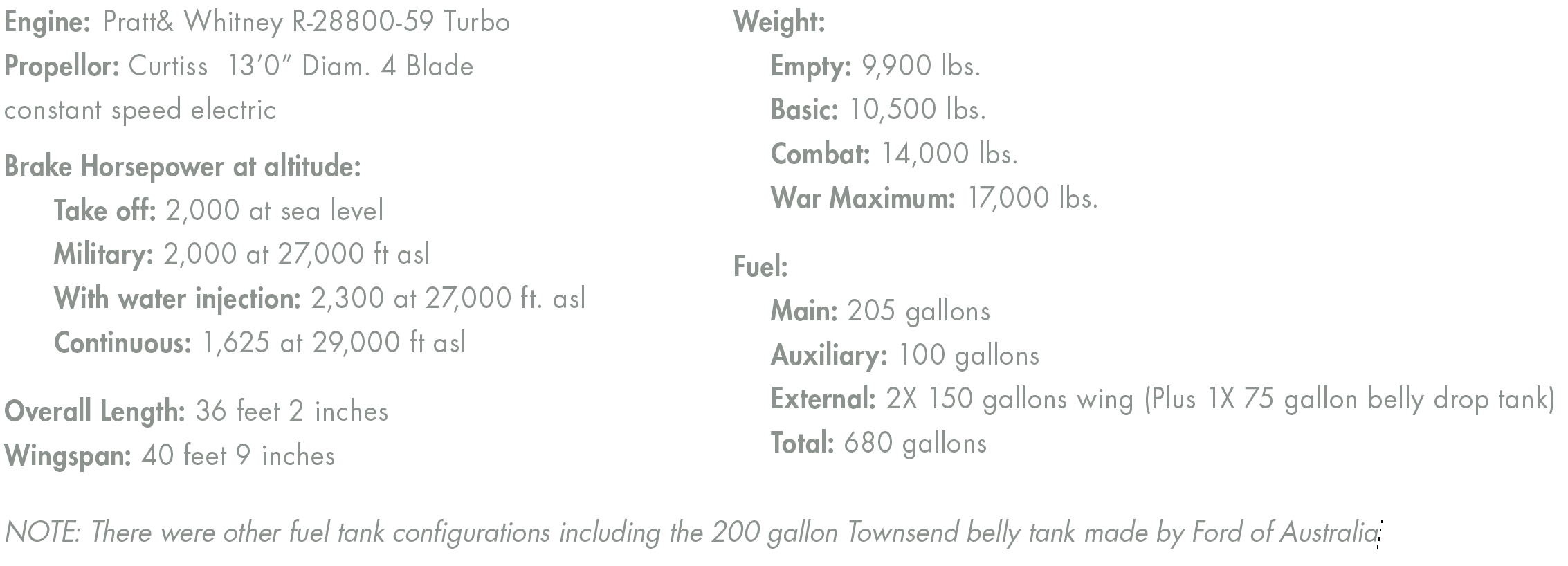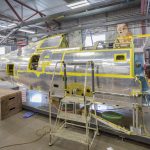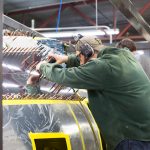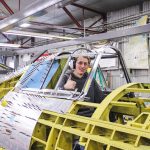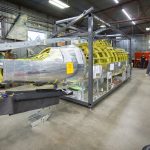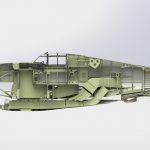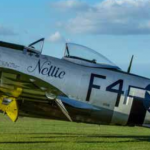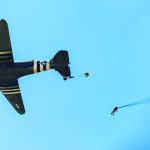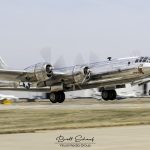WarbirdsNews has just received the April, 2019 report from Chuck Cravens concerning the restoration of the Dakota Territory Air Museum’s P-47D Thunderbolt 42-27609 at AirCorps Aviation in Bemidji, Minnesota. We thought our readers would be very interested to see how the project has progressed since our last article on this important project. So without further ado, here it goes!
Update
Fuselage work continued this month, including removing the fuselage assembly from its fixture in the later part of the month. Work on wing spars was begun and, as always, parts fabrication and finishing continues. Included in this month’s update is an image of a page from (at the time) Major Bill “ Dingy” Dunham’s own 342nd Squadron class book.
Fuselage Assembly Work
Fabrication
Out of the Fixture!
Another restoration milestone was reached this month. The fuselage has progressed to the point where it was removed from the main alignment fixture. With such a large assembly, the process was complicated and done very cautiously.
Wing
As the fuselage progresses, work on the wing assembly has begun. The spars were the first items on the list and their manufacture started this month. Of course parts have been in the fabrication process for a long time, and some still are, but it is great to see them coming together in the fixtures.
5th Air Force’s William “Bill” Dunham, second leading P-47 ace against Japan
Bill Dunham was the second leading ace (behind Neel Kearby) of the 5th Air Force’s 348th Fighter Group. While our research indicates that 42-27609 was more likely to have been a 35th Fighter Group Thunderbolt, it is still possible that it could have been assigned to the 348th, at least for a short time.
Bill’s daughter, Margo Prudente, very generously allowed us to digitize Brigadier General Dunham’s 342nd fighter squadron class book from his late 1942 training in P-47s.
The 342nd FS trained at Bedford, Massachusetts. The notes in the image above are in Bill Dunham’s handwriting, and list his air-to-air victories up until October 11th, 1943. He kept notes in this class book on all the members of the squadron. Notes were written on each pilot’s photo page and listed victories and their loss or transfers out, when appropriate.
In January 1943, Dunham deployed with the 342nd Fighter Squadron in Australia and New Guinea and served as operations officer and later commander. In July 1944, he became commander of the 460th Fighter Squadron in New Guinea and remained in this position until December 1944, when he became operations officer of the 348th Fighter Group, Philippine Islands.
Bill Dunham flew three different P-47s in combat, a D-2RE, a D-21RE and the one shown above, a D-23RA, his final P-47 before the 348th FG switched to Mustangs.
In January 1945, Lt. Col Dunham returned to the United States and attended gunnery school at Foster Field Texas, until May 1945. Upon graduation, he immediately returned to the 348th Fighter Group in the Philippine Islands and continued to serve as operations officer. He later became deputy commander [Ref: USAF Biographies, downloaded 4/18/2019].
Dunham’s final World War Two victory tally reached 16 on August 1st, 1945 in a P-51 named Mrs. Bonnie. All 15 earlier victories were achieved while he was flying one of his three P-47s. [Ref:John Stanaway, Mustang and Thunderbolt Aces of the Pacific and CBI, Aircraft of the Aces Series (Book 26), (New York: Osprey Publishing, 1999) p47]
Physical and Performance Specifications of the P-47D-23RA
The P-47D-23 from the Evansville factory and the D-22 from the Farmingdale, NY factory were the first of the Thunderbolts to use a paddle-blade propellor. These wider and longer blades were installed to better use the horsepower of the R-2800 at high altitudes, and to increase climb performance. The D-22 used a 13 foot 1 inch Hamilton Standard hydraulically actuated prop and the D-23 used a 13′ 1″ Curtiss Electric, with the pitch change accomplished via an electric motor driven mechanism.
Coupled with the water-injection and the higher turbo rpm limits, the P-47D-23 represented an increase in performance.
In his excellent book Check Six, co-authored with Terry Poprovak, James Curran mentions the D-23. “Later in the war, my last Jug, a P-47D-23, had a turbo relined at 23,000 rpm. Coupled with alcohol/water fuel injection, the Pratt & Whitney engine delivered 60 inches of manifold pressure all the way to 40,000 feet. What a ride!” [Ref: Jim Curran and Terrence Popravak Check Six!: A Thunderbolt Pilot’s War Across the Pacific ( Havertown, PA, Casemate Publishers, 2015) p64]
Performance and physical specifications from USAAF data explicitly for the D-23 follow:
Take Off (T.O.) and Landing
High Speed and Climb
And that’s all for this month. We wish to thank AirCorps Aviation, Chuck Cravens (words and images) as well as John LaTourelle (images) for making this report possible! We look forwards to bringing more restoration reports on progress with this rare machine in the coming months.
Is the P-47 Thunderbolt your favorite airplane? Make sure to purchase issue #73 of Warbird Digest featuring the beautiful “Dottie Mae”
